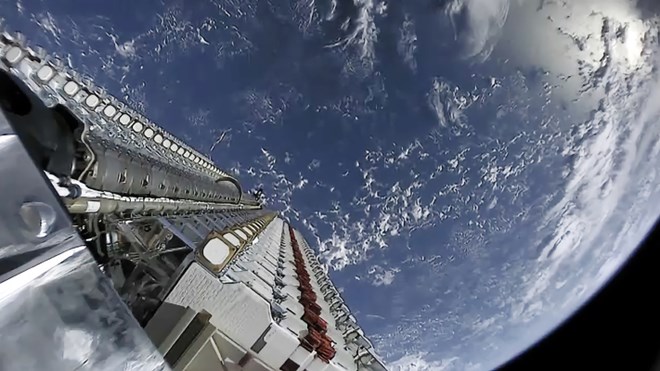The two tech giants announced the collaboration Thursday (May 13) to provide data, cloud services and applications for enterprise Starlink customers at locations around the world, starting later in 2021. The value of the deal was not disclosed.
Major implications for the growing constellation of 1,500 orbiting Starlinks include SpaceX building ground stations in the same locations as Google data centers, and connecting Starlink satellites to existing Google Cloud infrastructure. SpaceX will install the first Starlink terminal at Google’s New Albany, Ohio data center, a spokesperson told The Verge.

“Combining Starlink’s high-speed, low-latency broadband with Google’s infrastructure and capabilities provides global organizations with the secure and fast connection that modern organizations expect,” Gwynne Shotwell, SpaceX president and chief operating officer, said in the statement.
The collaboration also plans to bring in emerging cloud services – such as artificial intelligence and machine learning – to make decisions about what parts of a dataset should be sent to Earth; these computer services could reduce bandwidth needs. SpaceX’s target market for customers are those who work in rural areas where Internet speed is often diminished.
Google and SpaceX inked another major deal in 2015, when Google said it would spend $900 million on SpaceX “to support continued innovation in areas of space transport, reusability and satellite manufacturing,” according to SpaceNews. For perspective, this was four years before the first Starlink launched in 2019, and before SpaceX had self-landing Falcon 9 rockets working in a bid to reduce launch costs.
One of Google’s major competitors, Microsoft, also announced a deal with SpaceX and SES in October 2020 for cloud services. At the time, the companies said the pact would support Microsoft’s Azure Space cloud business that operates from mobile data centers that can be deployed anywhere around the world.














